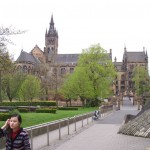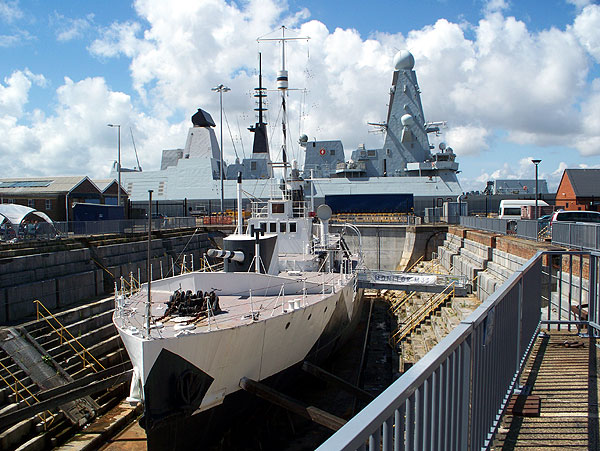
The monitor ship M33 has recently completed a restoration of its interior and was ceremonially opened on the 6th August 2015. Previously one had only been able to view the ship from the top of the drydock.
I was one of the first members of the public allowed on board on the 7th August. The ship was built within around seven weeks as a shore bombardment vessel, and despite mounting two 6 inch guns it has a displacement of only a few hundred tons and no armour.
You may find it interesting to compare this ship with the 10,000 ton cruiser HMS Belfast (C35) which has twelve 6 inch guns.
M33 is one of the very few ships surviving from WWI, and the only survivor of the Gallipoli campaign.
As seen today, the 6″ guns are essentially the same as the originals, and the crew accommodation, stores, officer quarters, galley, wheel house, radio room etc have been fitted out with representative contents. Maxim guns as used for repelling close attack stand on slots in the side deck.
The engines and boilers were removed a long time ago, prior to the ship’s use as a hulk, and have not been replaced. Instead, the space is used as a cinema for a short film. The bass sound in the empty steel space is quite effective. 🙂
The ship is well worth a visit and can be visited as part of the Portsmouth Historic Dockyard. Charges apply.
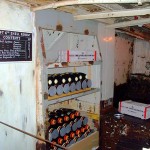
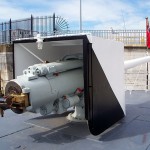
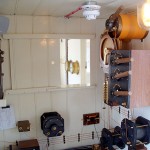
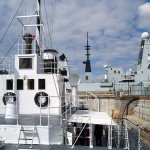
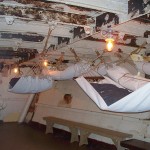
Category: Museum
Museums and collections
D-Day Museum, Portsmouth
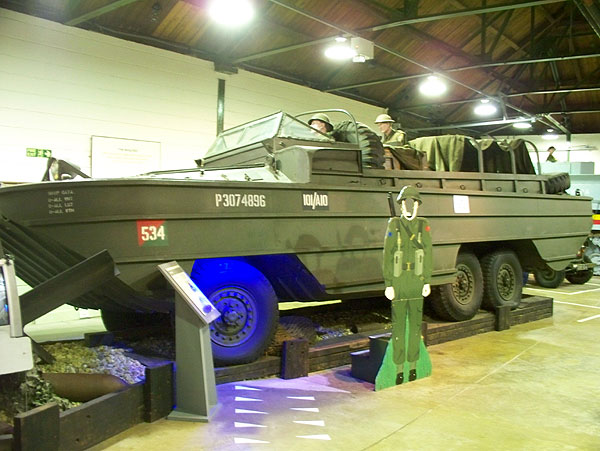 The D-Day Museum is housed in a modern building near the Southsea Castle on the sea-front.
The D-Day Museum is housed in a modern building near the Southsea Castle on the sea-front.
A circular hall has a modern D-Day Tapestry displayed around its circumference, and an auditorium for showing a short 15-minute film in the centre. On the other side of the museum, a winding series of galleries display materials on the build-up to D-Day and the invasion itself. A final pair of halls show vehicles used in the invasion – a glider, jeep, tank, tank landing craft and a DUKW.
It is an interesting museum and worth a visit if you are in the area or if you have a connection with the invasion.
Admission charges apply.
A car park (chargeable) is next to the museum, or you can park along the sea front (chargeable).
The Southsea Castle is about 100 yards away – in fact the D-Day Museum is within the outer defences of the castle.
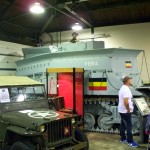
Wheal Martyn, Cornwall
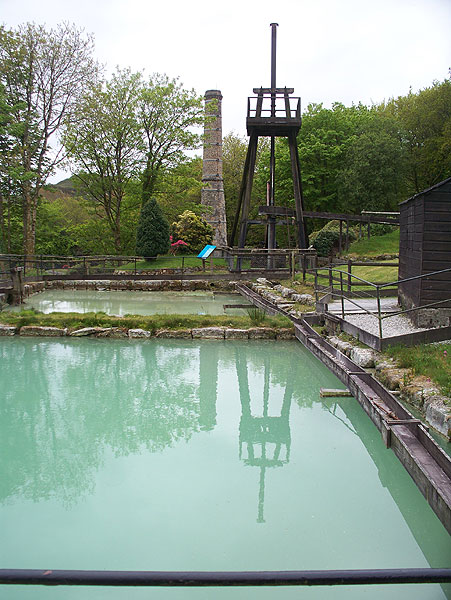
The reception centre has a shop, cafe and a museum exhibition which has interesting displays and videos about the clay mining industry.
The historic trail leads you in an around the old buildings of the Victorian works. Here, processing and drying of the clay was carried out. Parts of the works continued in use till 1969. Equipment for various parts of the process can be seen, including two water wheels.
The viewing point at the top of the site gives a view down into the huge working pit. Binoculars would be an advantage here, as the trucks (actually huge) look very small down below. Another viewing point on the nature trail gives a view in the opposite direction, across the valley.
Before leaving the site, have a look at the relics around the coach park.
I found the museum interesting, though the display labeling in the historic area is looking a bit tired in places. There is enough to see to fill a half-day visit.
Nearby: China clay valley walks, Charlestown.
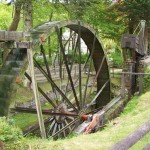
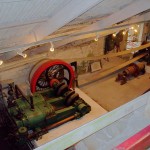
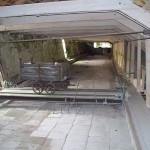
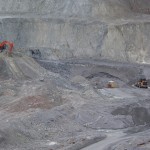
Felixtowe Museum
The Felixtowe Museum is housed in the old submarine mining building to the right of the Landguard Fort entrance.
The exhibit rooms span a range of interests from the military to local social history.
Rooms are devoted to seaplanes, naval matters, defensive mines, a local mental asylum etc.
It is well worth a visit if you are visiting the peninsula. Check opening days before travelling, as the museum is manned by volunteers and the opening days seem limited.
Brunel Museum, London
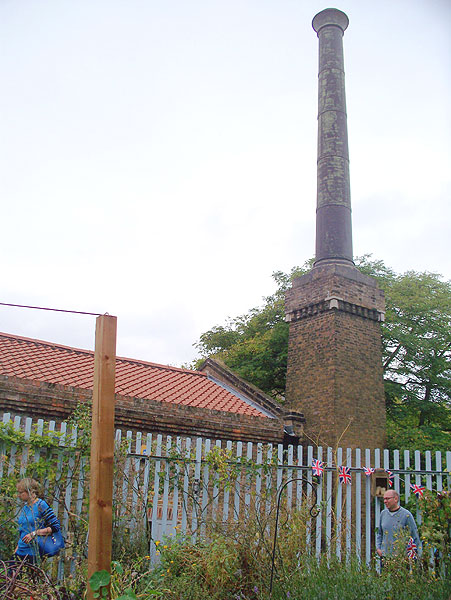 This museum is sited above the Rotherhithe Tunnel built by Brunel in the 19th century. It’s an interesting site, but you should manage your expectations before visiting. The museum (or rather, mini-museum) is housed in an original engine house above the tunnel. The pump engines are no longer there, but you can see a video and display panels about Brunel (father and son) and their project. There is access by guided tour to the original access chamber for the tunnel, a large underground cylindrical space. You have to climb over a small wall, go through a 4ft high opening and descend a scaffold tower. (Definitely no disabled access!) There is a modern concrete floor between you and the train tunnels. There is also a pleasant garden sited above the chamber roof.
This museum is sited above the Rotherhithe Tunnel built by Brunel in the 19th century. It’s an interesting site, but you should manage your expectations before visiting. The museum (or rather, mini-museum) is housed in an original engine house above the tunnel. The pump engines are no longer there, but you can see a video and display panels about Brunel (father and son) and their project. There is access by guided tour to the original access chamber for the tunnel, a large underground cylindrical space. You have to climb over a small wall, go through a 4ft high opening and descend a scaffold tower. (Definitely no disabled access!) There is a modern concrete floor between you and the train tunnels. There is also a pleasant garden sited above the chamber roof.
There is no access to the under-river tunnel from the Museum. Instead, you have three options:
1) Take a London Overground train through the tunnel at any time of your convenience. You may not see much. Most of the Victorian brickwork is now coated with shot-crete.
2) Take a train excursion at a time when the tunnel lights are turned on.
3) Book for one of the rare walks through the tunnel, when the trains have been stopped for maintenance. It will cost you around £18.
By public transport, you can reach the museum by London Overground train to Rotherhithe, or by tube to Bermonsey, then bus. There is a great view of the river a few yards to the North.
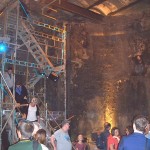
Explosion! The Museum of Naval Firepower
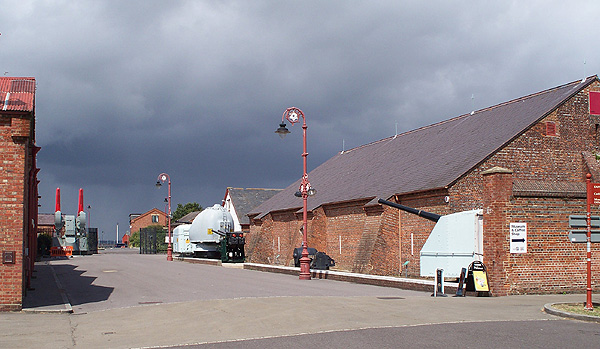
The Explosion! museum is situated in Gosport, Hampshire, in the 18th century buildings of the Royal Navy’s former armaments depot. The Museum is one if the Portsmouth Historic Dockyard group of attractions.
The displays include historic uses of the site, plus naval weapons of all sizes. The largest complete gun assemblies with mountings are around 4 and a half inch, larger guns being represented by 6″ barrels and a 15″ breech. Some gun mountings can be seen in the photo above. There are also missiles, mines and torpedoes of various ages, including a nuclear bomb. If you like weaponry, this is for you. There are over a dozen display halls.
The Museum has a large number of modern audio-visual displays for interpretation and further information, but I found several that were not working properly.
My tour took around 3 hours, and I could have spent longer.
Access: The site can be reached by water-bus from the Historic Dockyard at Portsmouth, or by road from Gosport. The water-bus is infrequent; however the alternative access by road passes through a long built-up area and is liable to be very slow on a weekday.
Imperial War Museum, London
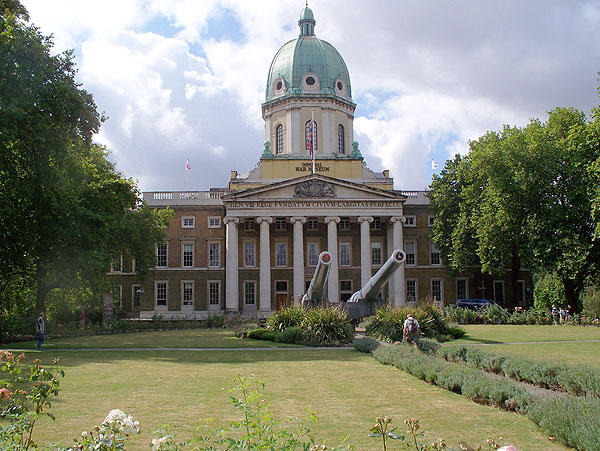
The Imperial War Museum was founded to commemorate the First World War. By 1936 it was housed in the former central building of the Bethlem Hospital.
After WWII the museum’s scope was enlarged to commemorate WWII and Commonwealth conflicts. There have been several phases of redevelopment of the Southwark building, the latest being completed in mid-2014 and incorporating a new WWI gallery for the centenary.
There are now several outposts of the IWM in various parts of the country.
Today the main features of IWM London are the WWI galleries, the central display of large exhibits, the Holocaust exhibition, medal collection, and a series of conflict galleries representing the WWII desert campaigns, Northern Ireland, Afghanistan, etc.
IWM London is best reached by public transport. There are two Underground stations within walking distance.
Visit date 9 Aug 2014.
Kelvingrove, Glasgow
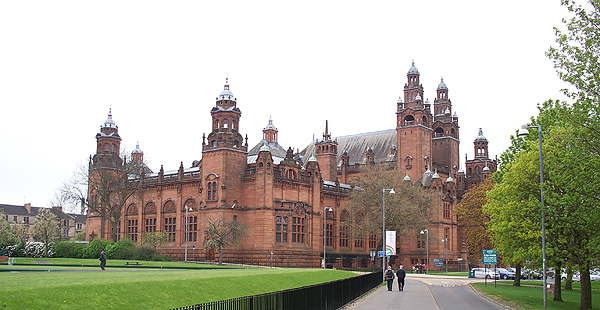 Museum
Museum
The Kelvingrove Art Gallery and Museum is one of the most visited museums in Scotland. It is housed in a magnificent Victorian building. The Kelvingrove is generally included in the ‘Mackintosh Trail’ as it has a significant collection of Charles Rennie Mackintosh designs. If you are interested in Scottish art, the Kelvingrove also has collections of the Glasgow Boys and the Scottish Colourists.
The magnificent Centre Hall contains a pipe organ, and on the day I visited there was an organ recital.
For kids, the West Court contains a lot of stuffed wild animals and a Spitfire.
Not to be missed. Admission is free.
The nearest Underground stop is Kelvin Hall. There is a pay car park on the park side of the building.
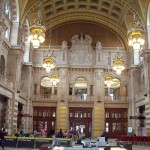
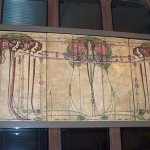
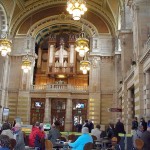
Burrell Collection, Glasgow
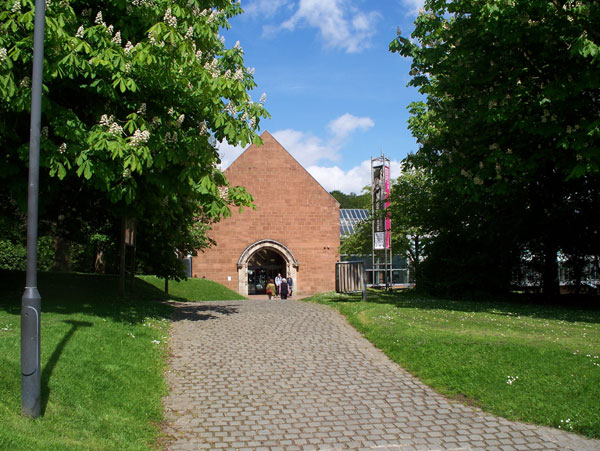
Museum
The Burrell Collection was amassed by rich collector and shipping magnate Sir William Burrell, and was originally housed mainly at his home, Hutton Castle.
On his death, it was gifted to the City of Glasgow, and after some delay was housed in a new gallery in Pollok Country Park. The gallery building incorporates some architectural stonework collected by Burrell, and also several reconstructed rooms from Burrell’s mansion.
The main items of the collection are paintings by major artists including Rodin, Degas and Cézanne, and important examples of late medieval art, Chinese and Islamic art, and collectible objects and statuary including Ming vases and Islamic carpets. Only part of the collection is on display.
The Collection (admission free) is eminently worth a visit. The building is a fine piece of modern architecture. Unfortunately, despite the eye-watering cost, the roof leaks badly, and the museum is due to close in 2016 for three years for repairs (at further eye-watering cost). Should have hired the Tesco’s architects 🙁
I advise you to visit soon.
Asides the above, there has been some controversy about the Collection and Burrell’s wishes. He did not want it housed so close to a then-smoky Glasgow. He did not want the contents toured abroad – but following an enabling private Act of Parliament an overseas tour is planned (to help pay for the repairs to the building).
The museum is in Pollok Country Park. It is accessible by bus, and by train. Pollokshaws West station is 200 yards from the park entrance.
If arriving by car, note that you can drive through the park, though the roads are quite narrow. There is a free car park about 500 yards away on the edge of the Country Park, past Pollok House. Parking is also available in the middle of the Park adjacent to the Burrell Collection building, but this car park has parking meters.
Hunterian Art Gallery, Glasgow.
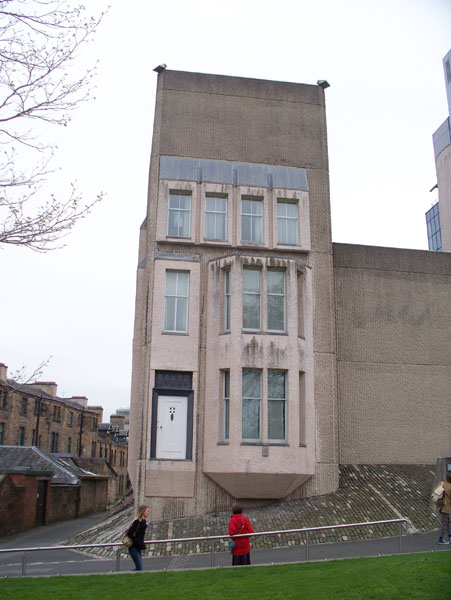
The gallery contains masterpieces by Rembrandt, Rubens, Chardin and Stubbs, and the world’s largest permanent display of the work of James McNeill Whistler. There is a significant Scottish Colourist collection, and works from the Glasgow Boys (and Girls).
Major examples of Scottish art from the 18th century to the present are on display. These include portraits by Ramsay and Raeburn, genre studies by Wilkie, impressionistic works by the Glasgow Boys, vivid landscapes, still-lives and figurative paintings by the Scottish Colourists, and paintings by leading 20th century artists and sculptors including Joan Eardley, Anne Redpath, Robin Philipson, Eduardo Paolozzi and William Turnbull.
Adjacent to the Gallery is a concrete replica of Rennie Mackintosh’s house at 78 Southpark Avenue, Glasgow (now part of the University site), with the original interiors re-installed. The replica enjoys almost the same views and pattern of natural lighting as the original. Service areas of the original house are not replicated.
The original house was demolished in the 1960’s as structurally unsound and new University buildings built over the site.
The original was built in the mid-19th century and remodelled by Mackintosh who lived in it from 1906 to 1914. The interiors with their typical Mackintosh features, and including a white fitted carpet, were clearly very modern for the Edwardian period.
(More recently, a house at 78 Derngate, Northampton with interiors by Mackintosh was restored at considerable cost.)
The Gallery and Mackintosh House (accessible by guided tour from within the Gallery) are both well worth a visit.
The nearest Subway stops are Kelvinbridge and Hillhead.
Bus 4,4A. No free parking.
